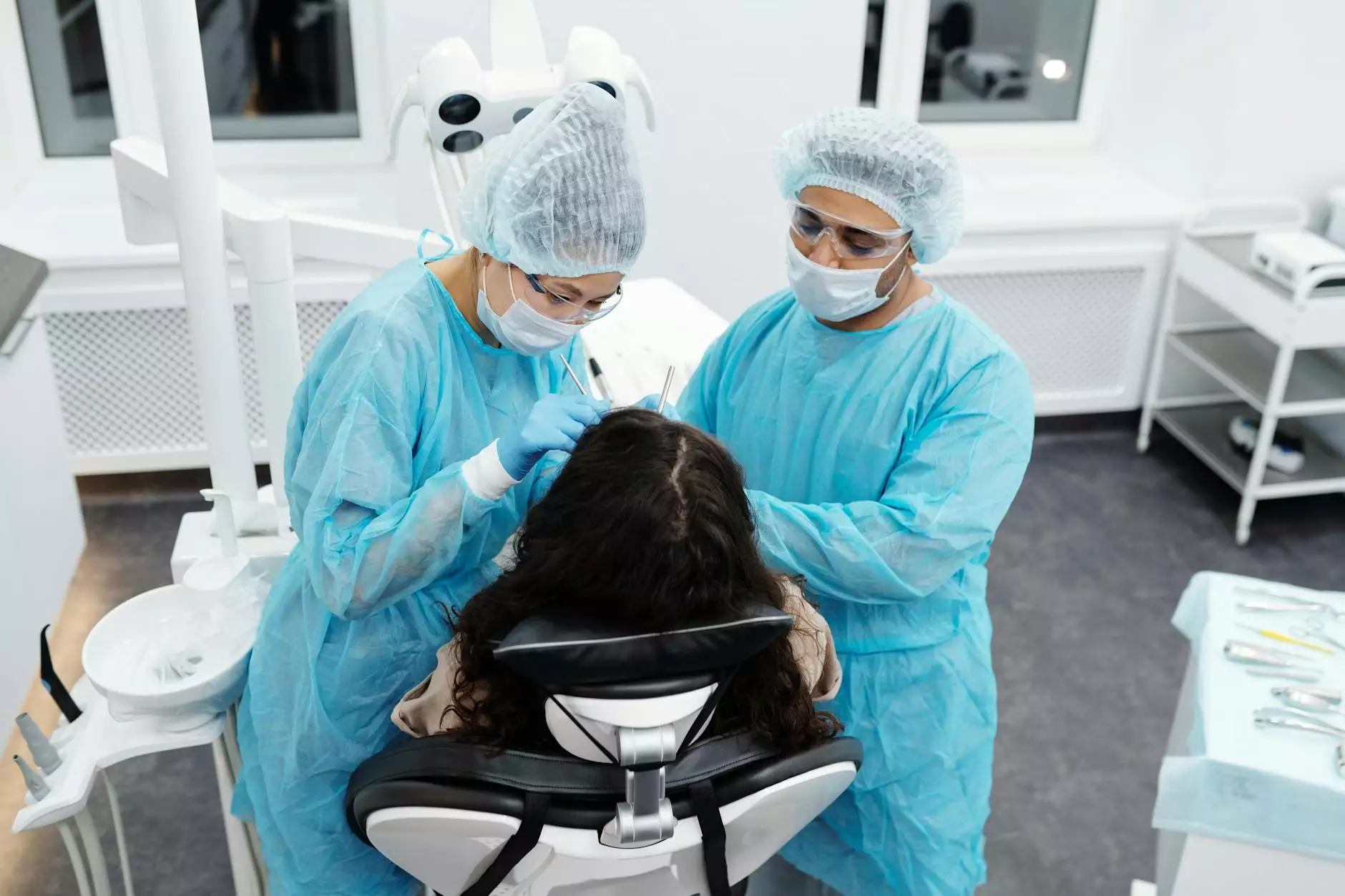Understanding Shoulder Pain on Abduction

Shoulder pain on abduction can be a frustrating and debilitating condition that affects many individuals. The shoulder joint is one of the most flexible joints in the human body, allowing for a wide range of movements. However, this flexibility also makes it susceptible to injuries and various conditions that can lead to pain, particularly during specific movements like abduction. In this comprehensive article, we will delve into the causes, treatment options, and preventive measures for shoulder pain on abduction.
What is Shoulder Abduction?
Shoulder abduction is the movement of the arm away from the body, starting from the side of the torso. This motion primarily uses the deltoid muscle and supraspinatus muscle, which are located in the shoulder region. It is an essential movement for many daily activities, such as reaching for objects, lifting items overhead, and performing various sports.
Understanding the biomechanics of shoulder abduction is crucial. The shoulder girdle consists of several components, including bones, muscles, tendons, and ligaments, that work together to allow smooth and pain-free movement. When any of these components are compromised, it can result in discomfort and pain.
Common Causes of Shoulder Pain on Abduction
Shoulder pain during abduction can arise from several factors, including:
- Rotator Cuff Injuries: The rotator cuff is a group of muscles and tendons that stabilize the shoulder. Injuries, tears, or inflammation in these areas can lead to pain when moving the arm outward.
- Shoulder Impingement Syndrome: This condition occurs when the shoulder tendons become trapped or compressed during abduction, causing pain and limiting motion.
- Tendinitis: Inflammation of the tendons in the shoulder, often due to repetitive motion, can trigger shoulder pain during abduction.
- Frozen Shoulder (Adhesive Capsulitis): This condition leads to stiffness and pain in the shoulder joint, making movements, particularly abduction, painful and restricted.
- Arthritis: Conditions like osteoarthritis or rheumatoid arthritis can affect the shoulder joint, leading to pain during movement, including abduction.
- Acromioclavicular Joint Injury: Injuries involving the acromioclavicular joint can cause pain during abduction due to inflammation and swelling.
- Fractures or Dislocations: Previous injuries that result in fractures or dislocations of the shoulder can lead to chronic pain during specific movements.
Symptoms Associated with Shoulder Pain on Abduction
Alongside pain during abduction, individuals may experience a variety of symptoms, including:
- Weakness: A feeling of weakness in the shoulder, especially when attempting to lift the arm.
- Stiffness: Reduced range of motion or difficulty performing overhead activities.
- Swelling: Inflammation around the shoulder joint may be present.
- Noises: Clicking, popping, or grinding sounds during shoulder movement.
- Radiating Pain: Pain may radiate down the arm or across the shoulder.
Diagnosis of Shoulder Pain on Abduction
To effectively diagnose the underlying cause of shoulder pain during abduction, a healthcare professional will likely perform a series of assessments, including:
- Physical Examination: The physician will assess shoulder mobility, strength, and tenderness.
- Medical History: A comprehensive history of symptoms, previous injuries, and activities will be taken into account.
- Imaging Tests: X-rays, MRIs, or ultrasounds may be required to visualize bones, muscles, and tendons.
Treatment Options for Shoulder Pain on Abduction
Treatment for shoulder pain on abduction depends significantly on the underlying cause. Here are various treatment modalities:
Conservative Treatments
- Rest: Reducing activities that aggravate the shoulder can help in the healing process.
- Ice Therapy: Applying ice can reduce swelling and numb localized pain.
- Physical Therapy: A tailored rehabilitation program helps improve flexibility, strength, and overall function.
- Medications: Over-the-counter nonsteroidal anti-inflammatory drugs (NSAIDs) like ibuprofen can relieve pain and reduce inflammation.
Advanced Treatment Options
- Corticosteroid Injections: Injections can provide temporary relief for inflammation and pain.
- Assistive Devices: Slings or braces may be recommended to immobilize the shoulder during recovery.
- Extracorporeal Shock Wave Therapy: This non-invasive treatment can promote healing and reduce pain for certain conditions.
When Surgery is Necessary
In cases where conservative treatments fail to provide relief, surgical interventions may be required. Surgical options may include:
- Arthroscopic Surgery: Minimally invasive procedures that can repair tear in the rotator cuff or remove bone spurs.
- Shoulder Replacement: In cases of severe arthritis or damage, a partial or total shoulder replacement may be considered.
Preventing Shoulder Pain During Abduction
While shoulder pain can often be treated, prevention is key to maintaining long-term shoulder health. Here are some effective strategies:
- Strengthening Exercises: Regularly perform exercises to strengthen the rotator cuff and shoulder muscles.
- Proper Warm-Up: Always warm up before engaging in physical activity to prepare the muscles.
- Avoid Repetitive Strain: Take frequent breaks during repetitive activities to reduce strain on the shoulders.
- Maintain Good Posture: Practicing good posture, especially during desk work, can alleviate stress on shoulder joints.
- Use Proper Techniques: In sports and lifting, using the correct form can prevent injuries.
- Stay Active: Regular physical activity can help keep the shoulder muscles strong and flexible.
Conclusion
Shoulder pain on abduction is a common issue that can result from various underlying causes, including rotator cuff injuries, impingement, and arthritic changes. Understanding the mechanics of shoulder movement and recognizing the signs of pain can help individuals seek early intervention, which is crucial for effective treatment. By implementing preventive measures, individuals can protect their shoulder health and maintain an active lifestyle. Always consult with healthcare professionals for a proper diagnosis and treatment plan tailored to your specific needs.









